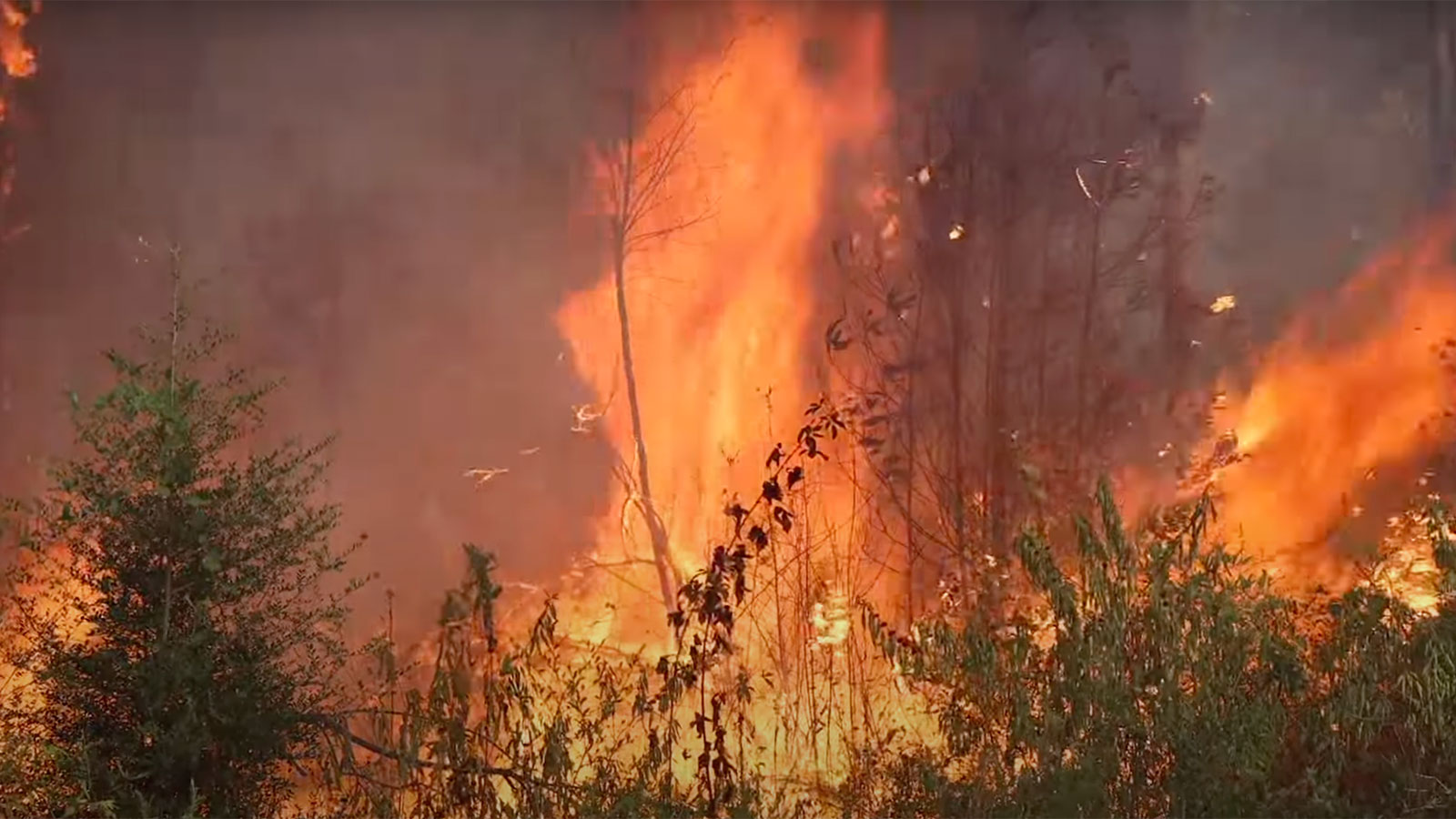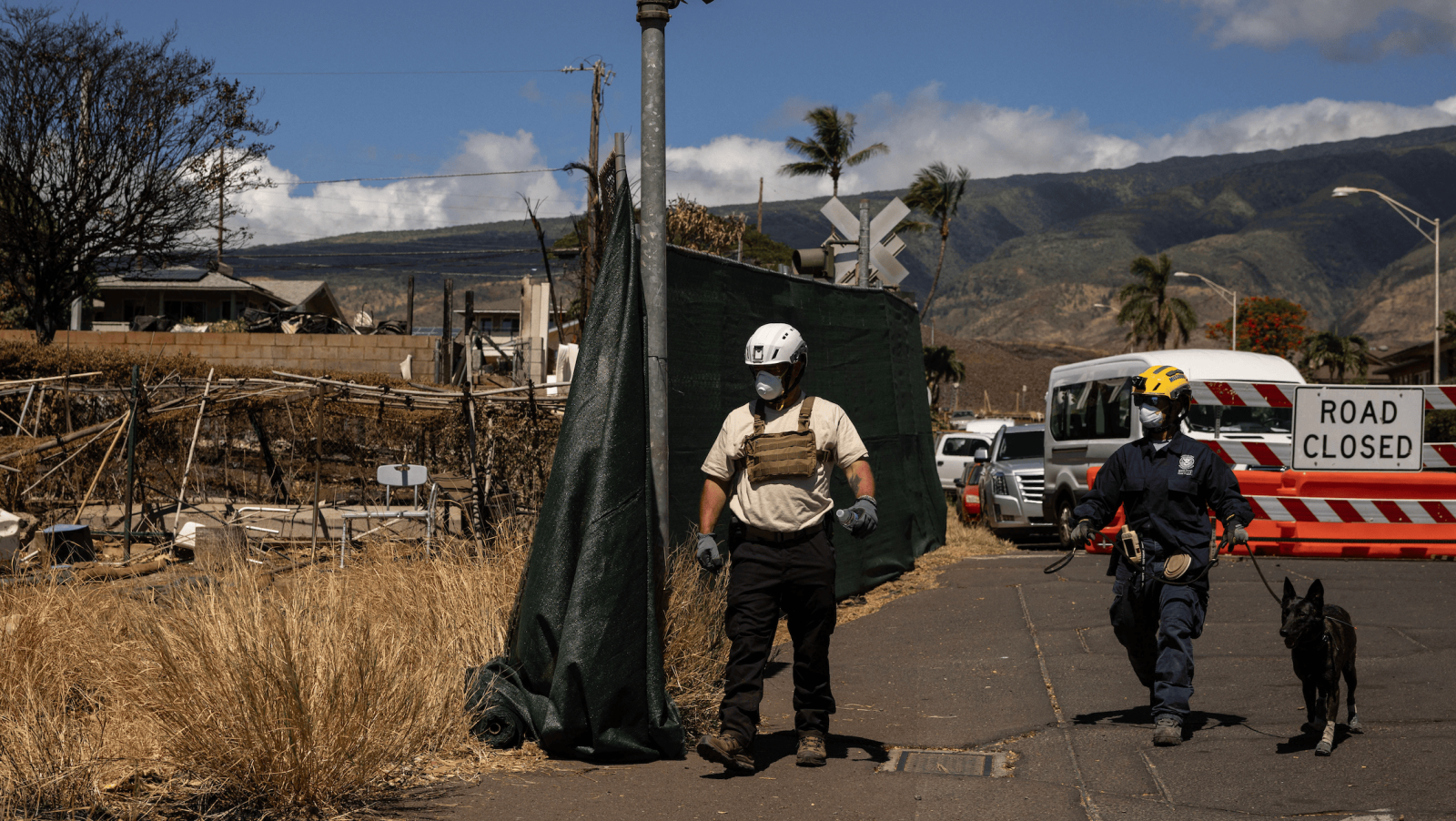Mike Strain, the commissioner who runs the Louisiana Department of Agriculture and Forestry, stared out the window of a Black Hawk helicopter on Tuesday, hovering over land that had become unrecognizable. From thousands of feet up in the air, he could observe the transformative effects of the drought that had gripped the state all summer long. Lakes and ponds lay completely empty, their beds cracked. Swatches of earth that would be, on a normal year, lush and green had turned brown. Acres of evergreen trees — oaks and magnolias and azaleas, signatures of the state — had begun to wither.
“It looks like West Texas,” Strain told Grist, the surprise evident in his voice.
These dry conditions have helped ignite a spate of wildfires across the state. In an average year, wildfires burn roughly 8,000 acres in Louisiana; fires in August alone have set alight more than 60,000. The worst of them, the Tiger Island Fire, currently burning near the southwest border with Texas, has taken out 30,000 acres so far, and is being called the largest wildfire that Louisiana has seen in 80 years. Two towns near that fire have been evacuated, and Strain announced a statewide burn ban as his agency and the state fire marshal’s office have struggled to respond to a kind of natural disaster uncommon in the swampy state, one of the country’s wettest.
The fires follow a summer of record-breaking heat and dryness across Louisiana. Shreveport in northwest Louisiana had its second warmest summer on record; New Orleans had its second driest. According to Danielle Manning, a lead meteorologist at the National Weather Service New Orleans/Baton Rouge forecast office, the city of Alexandria in central Louisiana had its warmest summer on record by a large margin — by nearly 2 full degrees — and a nearby fire led the police to close roads over the weekend.
Manning traced the unusually hot and dry conditions to late May, when a system of high pressure air parked over the state and has stuck around since. Some places haven’t seen rain since the spring.
“It’s not unusual to be underneath high pressure [air] at times during the summer, but for it to be as persistent as it was this summer is extremely unusual,” Manning said, adding that the frequency of extreme conditions like these are expected to increase in a warming climate.
The drought, in combination with record-breaking heat, has sucked many of Louisiana’s characteristic bayous dry. Stock ponds that farmers have relied on for generations to water their cattle are empty. The detritus left from hurricanes in recent years have made these conditions even riper for wildfires — fallen timber from hurricanes Laura, Delta, and Ida lay across approximately one million acres of the state, according to Strain. In such conditions, wildfires start easily, Manning said. A single lightning strike or trailer chains dragging along a highway could set one off.
Officials that Grist spoke to said that they plan to request help from the state to fight future wildfires, in case this summer’s conditions turn out not to be an anomaly. Strain hopes to expand his firefighting force by 50 personnel and to obtain additional firefighting equipment like bulldozers and air tankers. Ashley Rodrigue, a spokesperson in the state fire marshal’s office, said that while her agency has never dealt with wildfires of this magnitude before, the experience of working in a disaster-prone state has helped to mobilize quickly.
“You can think of it like football — the game is the same,” Rodrigue said. “But the play-calling based on where you’re at in the game is what changes, and in this instance, the play is for wildfires.”
Nonetheless, there have been some challenges: When a fire department is depleted of energy or equipment, the fire marshal’s office is supposed to step in and support them by finding additional resources. One of the things that they’re finding, Rodrigue said, is that some fire departments don’t always know what to ask for, because they haven’t dealt with anything of this scale before.
The National Climate Prediction Center has forecasted a 50 to 60 percent chance that conditions across Louisiana return to normal by mid-September. The Tiger Island Fire doubled in size over the weekend, but in a visit to the town of DeRidder on Tuesday, Governor John Bel Edwards, a Democrat, said that recent rain has slowed the blaze. That fire was 50 percent contained as of Tuesday.




